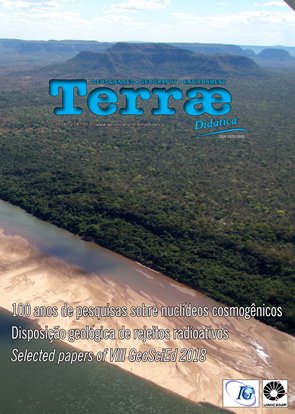Resumen
Geoscience Education is not included in the School curriculum in South Africa as a stand-alone subject area. Some concepts are embedded in other subject areas such as Plate Tectonic Theory in Geography and Evolution in Life Sciences. Consequently, most students who do register for a BSc degree at South African Universities do not initially intend to study Geology. Minimum entry requirements for different disciplines in the Faculty of Science at the University of the Witwatersrand (Wits) mean that most of the Geology I registrations are by students not qualifying for Mathematical or Physical Sciences. Biological Sciences can only accommodate a portion of these students so the remainder of the students end up in Geology because they wish to ob-tain a degree and are “forced to do Geology”. In an attempt to introduce future students to a broader view of Science, and in particular to Geoscience, Wits has started offering certified Short Courses at NQF Level 4 (National Qualification Framework school leaving certificate level). In 2016 Wits ran the Wits Integrated Experience in Science and in 2017, the Wits Integrated Experience in Science and Commerce, short courses. Learners were exposed to the integrated nature of various Science disci-plines and the integrated nature of Science and Commerce through enquiry based, problem solving learning opportunities. The target audience was Grade 11 learners as they have not yet applied to any university and have yet to make subject choices and degree choices. By participating in the short course they are exposed to a variety of disciplines and through investigating real problems, they are exposed to the interdisciplinary nature of these disciplines. In 2016 the learners solved a murder mystery and in 2017, they had to scenario plan for an impending meteorite impact just south of Johannesburg. This scenario planning helped learners to see the relationship between Science disciplines and between Science and Commerce. This is important as the initiative is designed to assist learners in actively choosing their Science and/or Commerce majors and to encourage learners to consider taking innovative major combinations that might cross traditional Faculty boundaries.Citas
Beggs J., Bantham J., Taylor S. 2008. Distinguishing the factors influencing college students’ choice of major. College Student Journal, 42(2):381-394.
Freedman L. 2013. The Developmental Disconnect in Choosing a Major: Why Institutions Should Prohibit Choice until Second Year. Butler University. The Mentor an Academic Advising Journal. URL: https:// dus.psu.edu/mentor/2013/06/disconnect-choosingmajor/, accessed 1/10/2016.
Goree C.T., Marszalek J.F. 1995. Electronic surveys: Ethical issues for researchers. College Student Affairs Journal, 15(1):75-79.
University of the Witwatersrand. Wits Vision 2020: Strategic Framework. http://www.wits.ac.za/AboutWits/ StrategicPlanningDivision, University of the Witwatersrand, Johannesburg, South Africa, pg 3 - 37, accessed 14/01/18.
Strategic Planning Division, First Year Student Experience Survey 2011; 2012; 2013 Strategic Planning Division, Wits Facts and Figures 2015 – 2016, https:// www.wits.ac.za/media/wits-university/footer/aboutwits/facts-and-figures/documents/Wits-Fact--Figures2017-2018.pdf, accessed 22/01/18.
A Terrae Didatica utiliza a licença do Creative Commons (CC), preservando assim, a integridade dos artigos em ambiente de acesso aberto.

